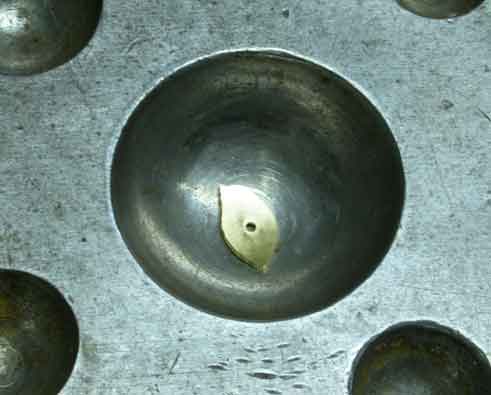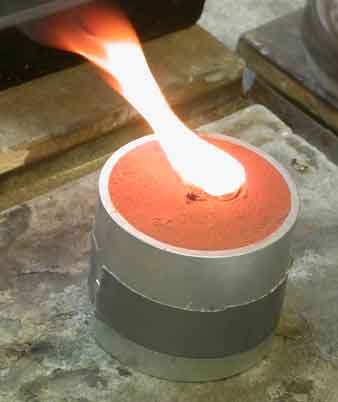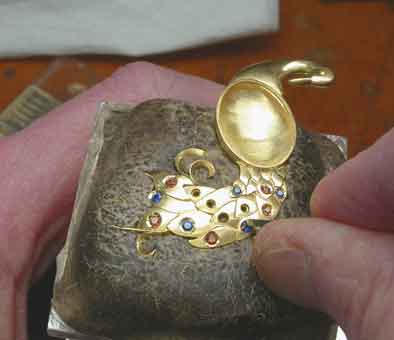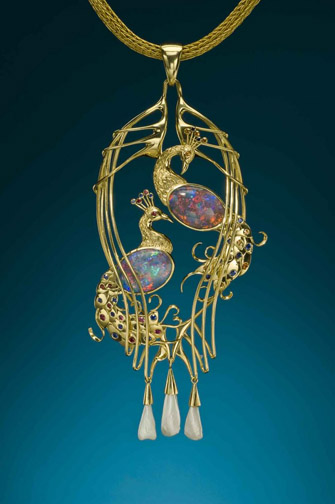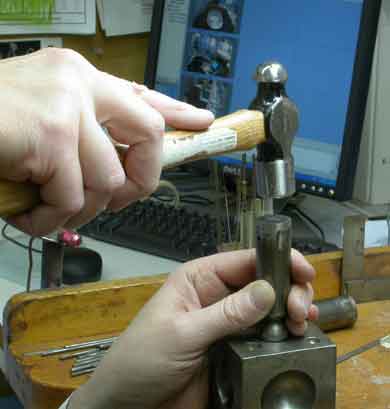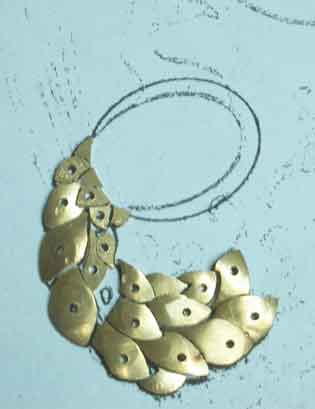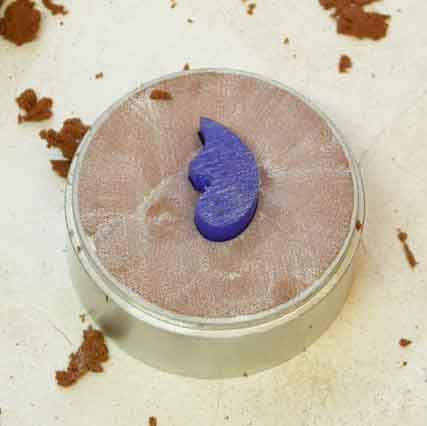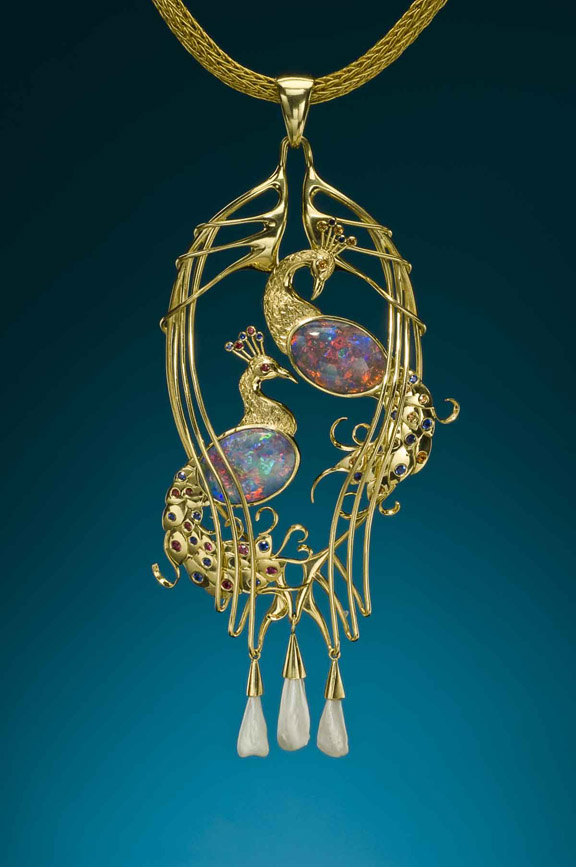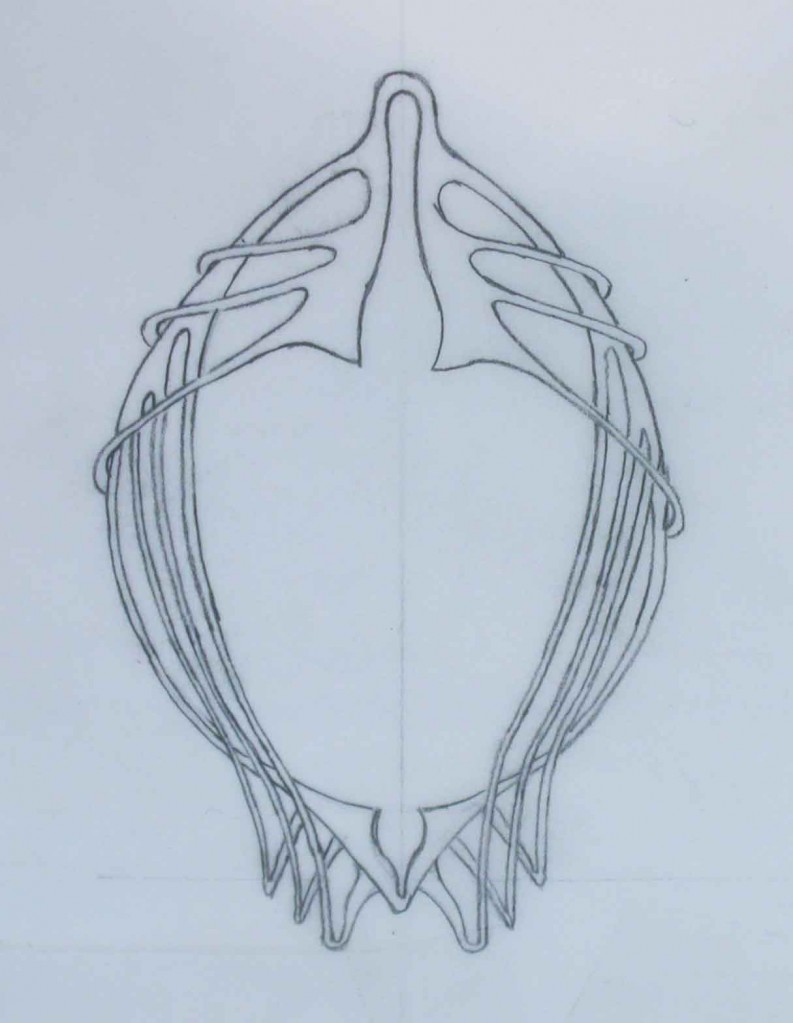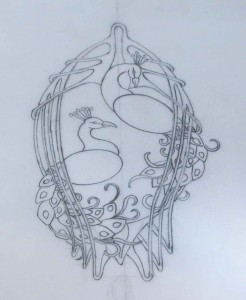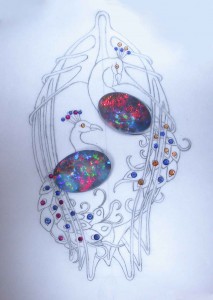
Handmade Originals
By Richard W. Wise, G.G.
© 2007
Well, we are home and back in the saddle again. I am sure that you are all heartily sick of images of us having fun in the sun but, Rio, St. Helena’s, Namibia, South Africa, Mozambique and Kenya: what a great trip.
One good reason to come home, a chance to see two beautiful new creations from the workbench of Laurie Donovan. These handmade original rings are made using a technique we call “floral appliqué”.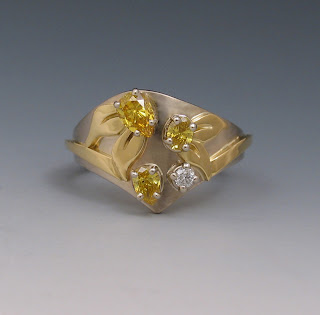
The Inspiration:
The design inspiration is drawn from Ukiyo-e or Japanese woodblock printing. The Ukiyo-e style began to influence Western art shortly after the island empire was pried open by Commodore Perry in 1855. In Japan, Ukiyo-e was originally a cheap reproducible art form aimed at the masses, so cheap that these prints originally found their way to Europe, stuffed into crates, as packing material. It wasn’t long before the Ukiyo-e style began to have a strong impact on Western art, inspiring the Art Nouveau movement along with such disparate souls as Gaugan, Van Gogh and Frank Lloyd Wright. (image right: 19th Century Japanese Ukiyo-e woodblock print with stylized leaves)
It wasn’t long before the Ukiyo-e style began to have a strong impact on Western art, inspiring the Art Nouveau movement along with such disparate souls as Gaugan, Van Gogh and Frank Lloyd Wright. (image right: 19th Century Japanese Ukiyo-e woodblock print with stylized leaves)
Ring #1,The Design:
Ukiyo-e provides an excellent point of departure for the Spectrum Award winning artist to demonstrate her lyrical mastery of line. In her experienced hand the jeweler’s saw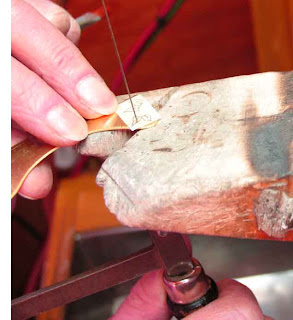 becomes as versatile as an artist’s pencil. (image left: Ms. Donavan cuts individual petals from gold sheet with jeweler’s saw) The choice of colored golds, in this case yellow and white, provide a subtle counterpoint. The shank of the ring is in 18k white with a sanded finish. This finish adds depth and allows the polished yellow leaves to standout sufficiently to echo and complement the vivid scintillation of the Fancy Vivid Yellow and colorless (D-VS2) diamonds.
becomes as versatile as an artist’s pencil. (image left: Ms. Donavan cuts individual petals from gold sheet with jeweler’s saw) The choice of colored golds, in this case yellow and white, provide a subtle counterpoint. The shank of the ring is in 18k white with a sanded finish. This finish adds depth and allows the polished yellow leaves to standout sufficiently to echo and complement the vivid scintillation of the Fancy Vivid Yellow and colorless (D-VS2) diamonds.
The Gems:
Exceptionally brilliant, these Fancy yellows have a slight orangy secondary hue (FVoY). Vivid Yellows  will almost always read as either slightly orange or slightly greenish. The orange secondary hue is much to be desired because it adds a sense of sunny warmth. (pictured right, original parcel of FVoY from which these stones were taken)
will almost always read as either slightly orange or slightly greenish. The orange secondary hue is much to be desired because it adds a sense of sunny warmth. (pictured right, original parcel of FVoY from which these stones were taken)
Ring #2, Design & Gems: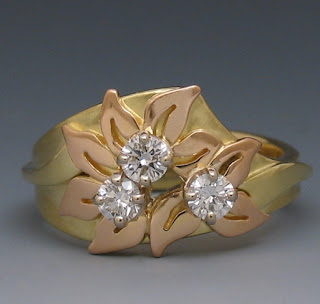
Ms Donovan constructed the second floral appliqué ring of green gold with rose colored appliquéd flower petals. Again the artist draws inspiration from the highly stylized Ukiyo-e designs. Each individual rose gold petal
designs. Each individual rose gold petal
is unique and beautifully frames the diamond to complete the blossom. These two colored golds are sufficiently exotic to stand up against the combined scintillation of three ideal cut round (D Vs2) diamonds. The green gold is cool, the rose warm. Note the artist has pierced the center section of the design to open it up and give it a lighter feeling. The green gold shank has been sand finished to maximize the contrast and bring out the color of the delicate rose colored petals.
Custom Design; From Concept to Completion:
We have specialized in custom design since our company was formed in 1978. We stand ready to work with you.
Rings in the floral appliqué style can also be made with other gemstones (yours or ours) by custom order. We have been working with contented clients for 28 years. Prices start at about $2,000.00 for a ring in 18k and vary depending upon the complexity of the design. As always the pieces are designed around and for the stones and we create several life-size sketches from which to choose your own unique design. If the first sketches don’t please you we will do more. There is never an extra charge for our creative services.
Visit our online gallery; www.rwwise.com. and send us an email richard@rwwise.com or call us toll free at 800.773.0249 (413.637.1589 in Berkshire County, or outside the U.S.).
Hours; Dead of winter: Thursday, Friday and Saturday from 10-5 (EST). Leave a message and we will call you back.
Interested in reading more about real life adventures in the gem trade?  Follow me on gem buying adventures in the exotic entrepots of Burma and East Africa. Visit the gem fields of Austrailia and Brazil. 120 photographs including some of the world’s most famous gems. Consider my book: Secrets Of The Gem Trade, The Connoisseur’s Guide To Precious Gemstones.
Follow me on gem buying adventures in the exotic entrepots of Burma and East Africa. Visit the gem fields of Austrailia and Brazil. 120 photographs including some of the world’s most famous gems. Consider my book: Secrets Of The Gem Trade, The Connoisseur’s Guide To Precious Gemstones.
“Wise is a renowned author… He’s
done a marvelous job of this first book, monumental work, a tour de force…My recommendation: Buy this book”.
Charles Lewton-Brain, Orchid
Now only $26.95. You can read a couple of chapters online: www.secretsofthegemtrade.com.
Buy it on Amazon: www.amazon.com
